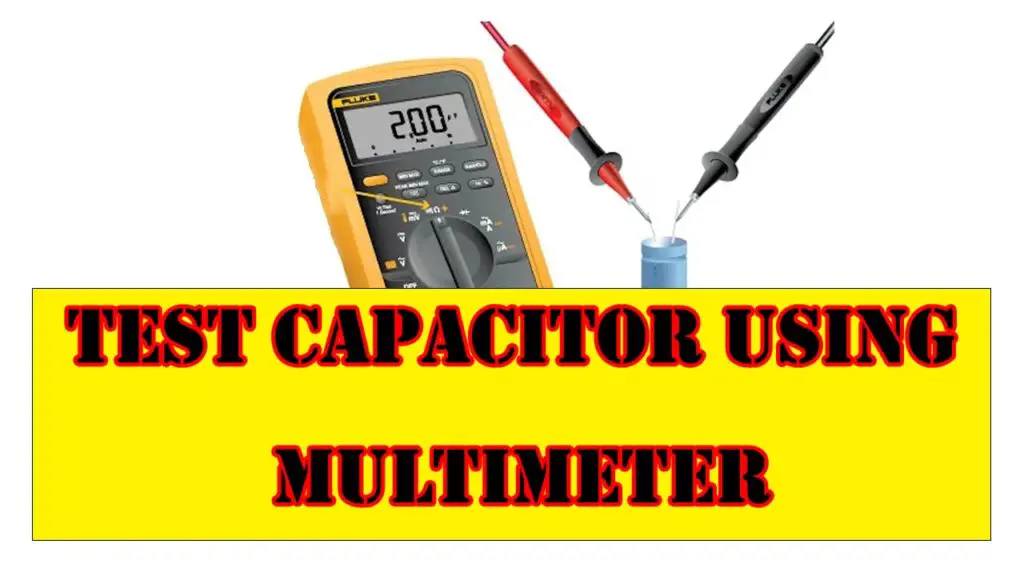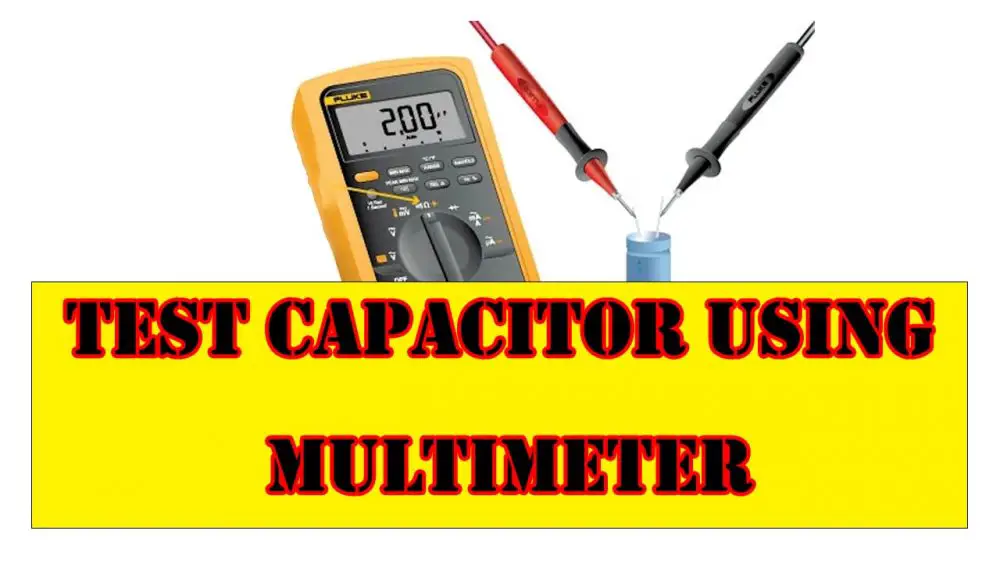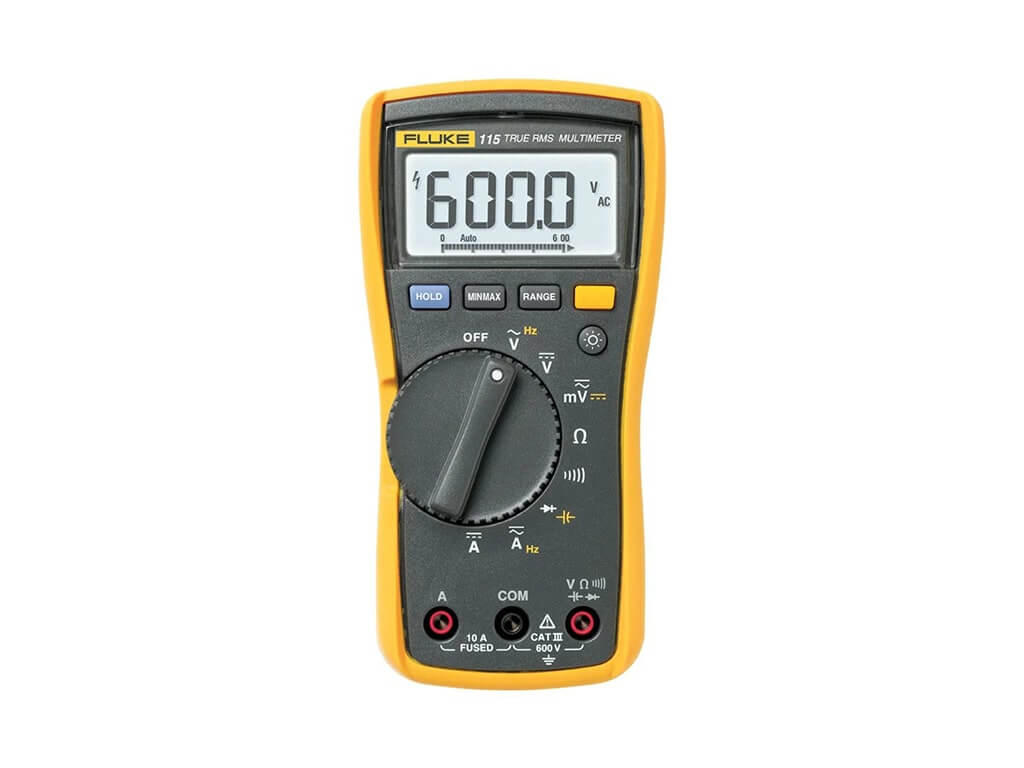How to test a capacitor using a multimeter?
A capacitor is an appliance to condense electricity. It is an electrical component with two terminals used to store current in electrical circuits and any devices. The capacitor stores energy between its two plates in the form of an electrostatic field. A capacitor is a necessary device used in many vital applications—for example, digital circuits. Therefore, the information stored in the large computer memory will not be lost during the emergency power failure. The electrical energy stored in such capacitors maintains all the stored data during the temporary power loss.
Checking Capacitance and Fluke 115 Setting:
- First of all, switch off all the devices and switch off the power.
- Secondly, remove the capacitor from the given device circuit.
- Over the outer surface of the body of the capacitor, some values are written.
- In my case, the value of this capacitor; is 1500uF 35v units used to check is; F= farad its meu farad.
- I have discharged the capacitor with the procedure mentioned above.
- If the capacitor is from A/C voltage, set the Fluke 115 digital multimeter dial settings to A/C voltage; if you check a D/C capacitor, set the meter’s dial settings to the D/C setting.
- Place the Fluke 115 multimeter in Relative mode for capacitance, Now leave the test leads open and press the REL button. This button will remove the residual capacitance value of the test leads.
- Now Connecting both the test leads to the negative and positive capacitor terminals.
- Keep the test leads connected for 10 seconds to allow the Fluke115 DMM to select the capacitance range automatically.
- Read the measurement on the display screen. If the capacitance value is similar to the measurement range, the multimeter will display the same capacitor’s value.
- The screen will display OL if; the capacitance value is higher than the actual measurement range. Otherwise, the capacitor is faulty.
I take Fluke 115 digital multimeter to test the capacitance for the setting of this digital multimeter.
Table of Contents
Tools for capacitance measurement
When we have to measure the capacitance means the alternative current, we need a multimeter. It depends on your device when you use a digital multimeter or an analogue meter. We require multimeter leads to check the current. We need a Capacitor device which we are measuring.
Electrical wire to make a circuit connection. A resistance to discharge the capacitor. Or a bulb is required to use capacitor current to discharge it.

How to check a capacitor?
A capacitor is an electrical device to store current. The function is to provide alternative current within a circuit. If the power is not generated, the current still holds in it.
Capacitors mainly work in two types; Electrolytic capacitors and vacuum tube and transistor power supplies—non-electrolytic capacitors.
A capacitor is an appliance to condense electricity. A capacitor is an electrical component with two terminals used to store current electrical circuits and any devices. Functionally capacitor stores energy between its two plates in an electrostatic field to regulate current as a static field.
The capacitor also requires services and testing during faulty functions. Check the capacitor thoroughly; If it leaks, cracks, bulges or other signs of deterioration, if present, then replace it.
How to discharge a capacitor?
The simplest way to discharge a capacitor is to remove the capacitor from the electrical circuit, and for safety purposes, it is not attached to any device in the house. Whether to test a capacitor, electrolytic or a capacitor is non-electrolytic.
We will check the two wires of the capacitors, one is supposed to be positive, and the other is the negative wire-like battery terminals. Both the wires of the capacitor if we join it together like we make a circuit. By joining the terminals, we can quickly discharge the capacitor.
Another way to discharge a capacitor is; to take out the capacitor from the circuit. Then, attach both the terminals of the capacitor to a voltage resistance by making a circuit; likewise, we are making a circuit to lighten a bulb with the battery. Successfully the resistance ate all the current, and the capacitor will become empty.
Similarly, we can use a light bulb, and again we make a circuit together with the two terminals and the light bulb by using a wire. Again, you will observe that the lighting bulb will slowly diminish its lighting and turn off, suggesting that the capacitor is discharging successfully.
We need to check if the capacitor or its condition is perfect.
How to use a voltmeter to test a capacitor?
- I take a Fluke 115 digital multimeter to check the capacitance of a capacitor; if you have any other meter, the process will remain the same.
- First, it is required to charge the capacitor by D/C voltage using a battery; the battery has two terminals connected to the other two terminals of the capacitor by making a complete circuit. In addition to this, the battery should be of a lower value than the capacitor.
- For instance, if a capacitor is 25 V, we will use a battery voltage of 9 volts only, whereas if a capacitor is 600V, we will use a voltage of around 400 volts.
- We will charge the capacitor for up to 10 seconds only.
- It is necessary to check and connect the positive, a red probe from the voltage circuit to the positive, or the longer capacitor wire. Likewise, the negative or black probe of the circuit is connected to the negative or shorter capacitor wire.
- The more extended probe of the capacitor is connecting to the positive voltage terminal. The shorter probe of the capacitor is connecting to the ground or negative terminal of the voltage.
- Both the terminals of the voltmeter would connect across the terminals of the capacitor.
- When the meter reading is the same, the voltage we charged declines, confirming that the capacitor is in suitable working condition.
- When the capacitor is not getting charged, and the voltmeter shows a reading, ensuring the capacitor is not in good condition or faulty.
Frequently Asked Questions
Capacitors are supposed to have limited life, and the leading cause is their malfunction.
Faulty capacitors might hurt a circuit to a short circuit; therefore, an open circuit might not supply or failure to deliver the current.
Because of the short circuits, a fuse would blow, or other appliances might not work, resulting in damage to the devices.
When a capacitor is malfunctioning, the circuit or components attached to the circuit may not operate well.
The deterioration would also change the value of capacitance in a capacitor, and this might be resulting in troubleshooting.
Conclusion
This article is about; how to use a multimeter to determine capacitance. First of all, we have discussed what capacitance is OR what is a capacitor? And why we need to know the capacitance value, and we have explained the procedure in detail to measure capacitance with the help of a Fluke 115 digital multimeter. Besides this, we have learned how to discharge a capacitor and together, we learned to recharge it again. For that purpose, we know how to operate different tools required to measure the capacitance. In addition to this, we also learned the procedure to measure the capacitance with a voltmeter.
Related Posts:
Test capacitor with the multimeter in circuit






